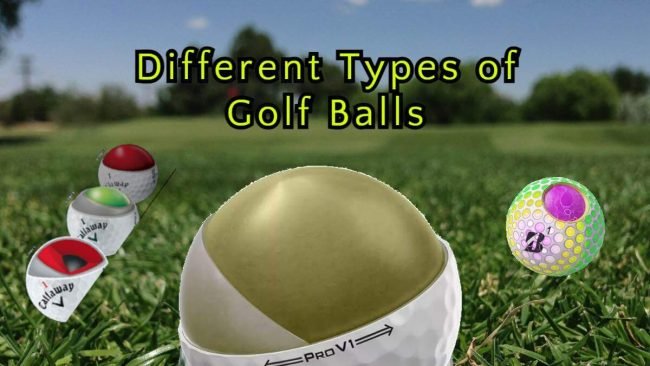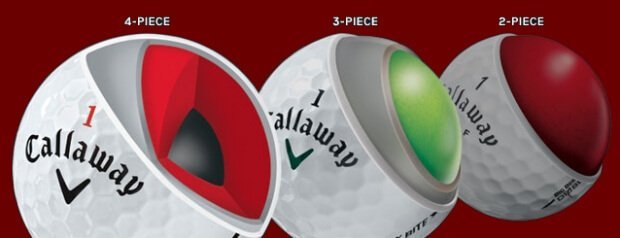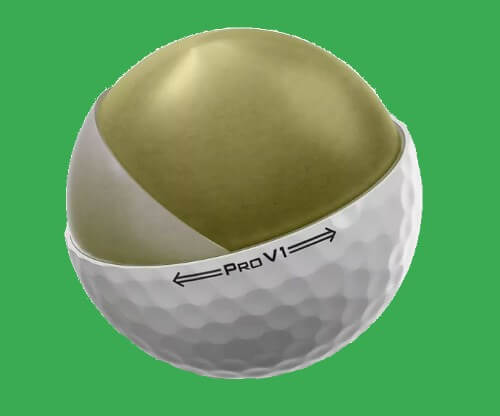Floating Chipping Greens – Top Pool or Lake Floating Golf Greens
Are you looking for an innovative way to practice your golf game this summer? Why not try a floating chipping green? Floating chipping greens are

Over the years as technology has progressed, the different types of golf balls one can purchase have grown exponentially. Whether it is a 2-piece or 5-piece, hard or soft, there are numerous options for golfers of any ability. In this article, we describe the different types of golf balls (in depth) to help you better understand which type you should be buying.
The type of golf ball that is best for your game varies based on the golfer’s skill level. Can you choose any off the shelf and just be done with it? Not necessarily. You want to have a golf ball that fits your golf handicap and play style, as having the right golf ball for your game can easily save you a few strokes out on the course. With that being said, let us look at all the different types of golf balls and see which ones may be the right one for you.
Most golf balls are constructed of three parts:
Even throughout the evolution of the golf ball dating back to the early 1900’s, the beginning stages of the golf ball still at least consisted of cores and a cover.
Every golf ball has dimples on top of them for two main reasons – lift and drag. Dimples help to keep the golf ball in the air longer and create extra forces that propel the ball longer distances. If they did not exist, you would more than likely see professional golfers hitting their drivers 250 yards instead of 350 yards.

Covers (the outer part of the golf ball) generally come in three types:
Urethane covers are the most well-known of the three and are on many of the most popular golf balls today, such as the Titleist ProV1. As the softest cover of the three, urethane provides both added spin and distance control, along with a better feel on the putting greens. The cover is best suited for low handicap players looking for more spin on their approach shots and around the greens.
Ionomer covers are more durable than urethane covers, with their main upside being less side spin for more forgiveness overall. The cover is ideal for mid-handicap players looking to reduce the amount of slice or hook on their shots. The main downside to ionomer covers is that more forgiveness comes at the cost of added spin and feel that urethane covers provide. If you do not need additional spin around the greens, ionomer covers can be found on affordable golf balls such as Bridgestone e12 and Titleist TruFeel.
Surlyn covers have the highest durability of the three and can provide the most distance for those who may not have the fastest swing speeds. This type of cover is ideal for mid-to-high handicap golfers who want more distance than what ionomer covers can provide. They are generally among the most budget-friendly golf balls on the market today. Examples of golf balls containing surlyn covers are the Callaway Hex Warbird and Titleist Velocity.
Also known as pieces (2-piece, 4-piece, etc.), the number of cores within a golf ball can drastically change one’s golf game. One-piece golf balls are all but non-existent with today’s technology and generally used as range balls for their durability, so let us begin with two-piece constructions.

Two-piece golf balls consist of a main core and the outer cover of different materials. They are the most widely used by amateur golfers and can be found in many retailers at budget-friendly prices. These types of golf balls are known for providing maximum distance with the least amount of spin and are ideal for mid-to-high handicap golfers. Due to the low amount of spin they produce, two-piece golf balls have an added benefit of forgiveness to reduce the amount of slice or hook higher handicap golfers may have. The downside is that the feel around the green can be lacking. In other words, don’t expect two-piece golf balls to check up next to the flag and stop moving, as you will have to adjust for their lack of spin when hitting approach shots. Two-piece golf balls include the Callaway Warbird, Bridgestone e5 and e6, and Titleist Velocity, to name a few.
Three-piece golf balls are the current crème-de-la-crème, with the Titleist ProV1 and Srixon Z Star among the most widely used golf balls on the PGA Tour today. Ideal for low handicap players, the extra layer in three-piece golf balls makes them softer than the two-piece version and provides added spin without sacrificing a lot of distance. Need the ball to check up around the greens and out of nearby bunkers? Want more feel when putting? This is the type of ball that can do it all. Not only will it provide greater spin around the greens, but your approach shots that land near the flag will stay there and not roll off the green as many two-piece golf balls will.

Four and five-piece golf balls have been on the market for a little over a decade now, and the science behind whether or not they provide better performance than three-piece golf balls can get a bit complicated. To simplify, the extra layers supposedly lead to less spin on drives and more spin on iron and approach shots for golfers with higher swing speeds. So, in essence, four and five-piece golf balls are for golfers with high swing speeds and looking for more forgiveness from their drives than a three-piece golf ball can provide. Many PGA Tour players have stayed with three-piece golf balls for the feel they provide, but four and five-piece golf balls are worth considering if you have a higher swing speed than most golfers and are looking for more forgiveness off the tee without sacrificing spin around the greens. They are among the most expensive golf balls to buy, with the most prominent example being the Taylormade TP5.
Categories
Are you looking for an innovative way to practice your golf game this summer? Why not try a floating chipping green? Floating chipping greens are
How I got on hole 16 (The Stadium hole) at the Waste Management Phoenix Open with little to no wait!! I also have tips and tricks on what to do once you are inside the gate and inside the stadium hole. Check this out if you ever plan to make a trip out! If you ever have the chance, it is definitely worth the trip.